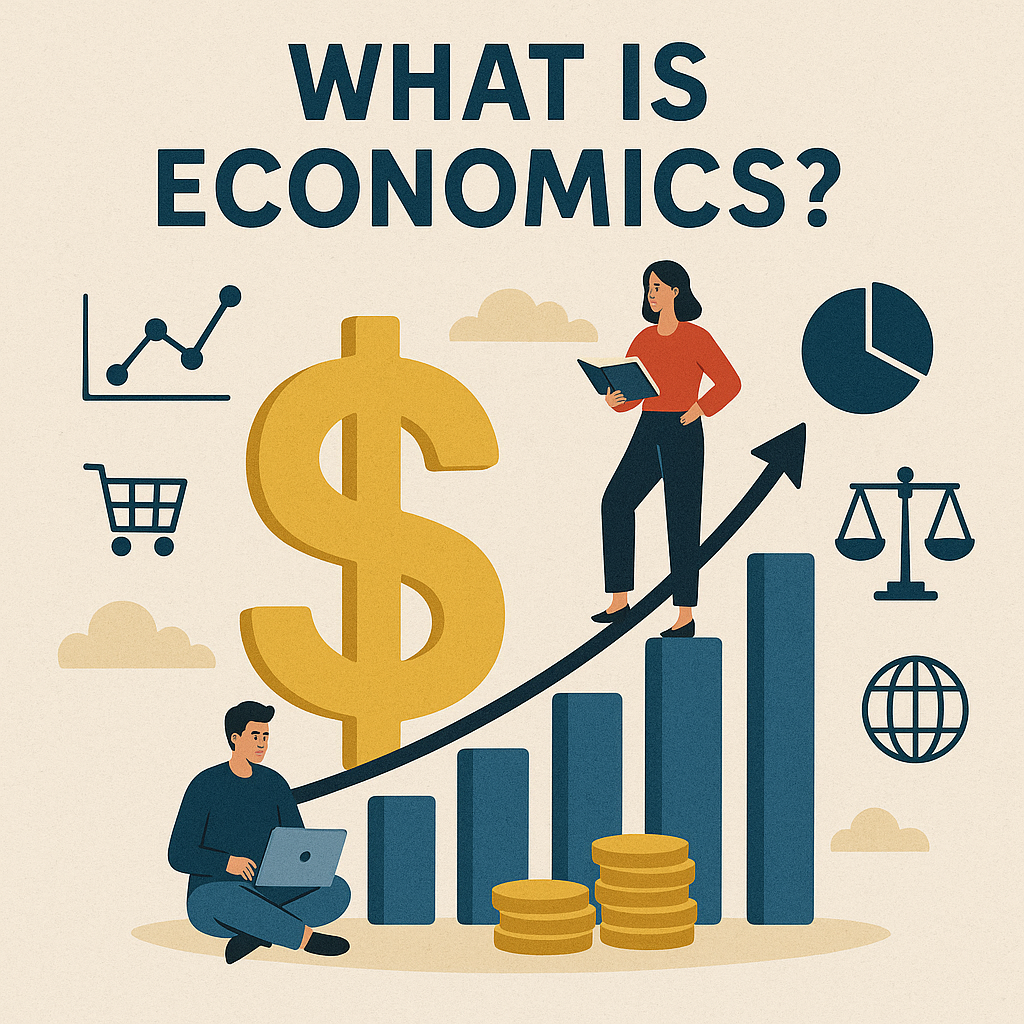Types of Market Structures
-
Competitive Markets:
In this model, there is no monopoly. It is based on perfect competition where everyone is striving to gain market share. -
Monopolistic Markets:
In contrast to competitive markets, monopolistic markets are fully dominated by a single entity.
In economics, markets are often compared to oceans, such as:
-
Red Ocean: Refers to competitive markets where success depends on selling a large quantity with low profit margins.
-
Blue Ocean: Refers to monopolistic or niche markets, where success comes from selling fewer units with high value and innovation.
World’s Most Famous Financial Markets
-
Stock Market
-
Cryptocurrency
-
Commodities
-
Indices
-
Forex (Currency Pairs)
-
Bonds
-
Money Market
Stock Market:
Among the most well-known are the New York Stock Exchange (NYSE) and the London Stock Exchange.
Cryptocurrency Market:
This is a relatively new and shallow market compared to others. Notable cryptocurrencies include Bitcoin, Ethereum, Tether, coins, and tokens.
Crypto markets can yield high profits or heavy losses, so continuous learning is essential.
Ways to Earn from Cryptocurrencies:
-
Holding (HODLing)
-
Trading
-
Metaverse
-
NFTs
-
Airdrops
-
Staking
-
Mining
Top Global Crypto Exchanges:
-
Binance
-
CoinEx
-
Kraken
-
OKX
Commodities Market:
This involves trading physical goods such as:
-
Agricultural products (e.g., wheat)
-
Energy (e.g., oil, gas)
-
Precious metals (e.g., gold, silver)
-
Soft commodities (e.g., cotton, sugar)
CFD Contracts:
In CFD (Contract for Difference) trading, traders don’t own the underlying asset. Instead, they speculate on price movements and earn from the difference between the entry and exit price.
OPEC and OPEC+
OPEC: An old and influential oil market consisting of 13 countries including Iraq, Saudi Arabia, Iran, Libya, Kuwait, Nigeria, Venezuela. Headquarters: Vienna, Austria.
OPEC+: An expansion of OPEC that includes Azerbaijan, Bahrain, Kazakhstan, Oman, Russia, Sudan, Mexico.
To succeed in oil trading, following OPEC news is crucial.
Forex (Currency Pair Market):
The forex market is backed by major banks and financial institutions. Popular pairs include EUR/USD, GBP/USD.
USD accounts for about 72% of the total forex volume.
To trade forex, you must register with a broker and use software like MetaTrader.
Market Indices:
Popular indices include:
-
NASDAQ
-
Dow Jones
-
S&P 500
-
U.S. Dollar Index (DXY)
Currencies used to measure the U.S. Dollar Index: EUR, CHF, JPY, CAD, GBP, SEK.
Top News Websites for Market Analysis:
-
Bloomberg
-
CNN
-
Twitter
-
The Economist
-
Reuters
-
CNBC
Best Chart Analysis Site:
-
TradingEconomics
Top Financial Utility Websites:
-
Yahoo Finance
-
FT.com
-
Kitco
-
Money.CNN
-
FederalReserve.gov
Economic Event Calendar Sites:
-
Calendar — for speeches, statements, FOMC meetings, and economic conferences
-
FXStreet
-
ForexFactory
Influential People in Financial Markets:
Jerome Powell, James Bullard, Lael Brainard
FOMC Meeting Minutes:
These are reports released two weeks after meetings, containing all economic indicators and forecasts.
Economic Forecast Scenarios:
-
Actual
-
Forecast
-
Previous
Inflation Indicators:
-
CPI (Consumer Price Index): Measures consumer inflation.
-
PCE (Personal Consumption Expenditure): Tracks consumer spending on durable and non-durable goods.
-
CCI (Consumer Confidence Index): Surveys optimism/pessimism among consumers.
-
PPI (Producer Price Index): Reflects the cost of goods for producers; it’s a leading indicator of CPI.
Trade Balance:
Calculated as Exports – Imports. If exports > imports, the trade balance is positive.
Production Indicators:
-
Durable Goods Orders
-
PMI (Purchasing Managers’ Index)
-
GDP (Gross Domestic Product)
GDP Formula:GDP = Household Spending + Investment + Government Spending + Net Exports
PMI (Purchasing Managers’ Index):
Indicates economic health via business activities, inventory levels, and purchase orders. A higher PMI means improved production and better company performance.
ISM (Institute for Supply Management):
U.S.-based; releases reports on the first working day after each month. A value of 50 is considered neutral.
Durable Goods Orders:
Issued by the U.S. Census Bureau. Durable goods are those lasting 3+ years. Increased orders suggest economic growth and consumer confidence.
Employment Indicators:
-
NFP (Non-Farm Payroll): Reports U.S. employment figures, excluding agriculture. Released the first Friday of each month. Crucial for forex and gold traders.
-
ADP Report: A private payroll report that can hint at NFP trends, though correlation is weak.
-
Unemployment Rate: Measures the percentage of the labor force that is unemployed and actively seeking work.
News Impact on Financial Markets:
News plays a vital role in price movement. It can drive markets up or down.
Important events include:
-
Retail Sales
-
CPI
-
Trade Balance
-
FOMC Meetings
-
NFP
Jobless Claims Indicator:
Shows the number of people filing for unemployment insurance. Released weekly by the U.S. Department of Labor. If it improves for 2–3 weeks, NFP is likely to rise.
Average Wages and Salaries:
Lowering unemployment but also reducing wages leads to dissatisfaction.
Higher wages increase costs for producers, possibly causing layoffs.
Unemployment vs. Wages:
These have an inverse relationship:
-
High unemployment → low wages
-
Low unemployment → high wages
Wages vs. Inflation:
Rising wages = higher production costs = cost-push inflation.
Interest Rates:
Set by the Federal Reserve 8 times a year.
Dot Plot Chart:
Shows interest rate projections from 19 Federal Reserve members (12 bank presidents + 7 permanent members).
The chart does not disclose individual identities or votes.
Retail Sales Index:
A key indicator that measures consumer spending on final goods.
High retail sales are good news for companies like Amazon, as they signal revenue growth and higher stock values.
Retail Index Highlights:
-
Measures only final goods
-
Includes durable and non-durable goods
-
Data sourced from U.S. Census Bureau
-
Collected from 13 social groups
International Monetary Fund (IMF):
Founded after WWII in 1944 to offer financial aid and economic advice to member countries.
Member countries contribute funds proportionally and can borrow accordingly.
Reserves include five currencies like USD, EUR, and JPY.
190 out of 195 countries are members.
World Bank:
Main mission: reduce poverty.
Services: loans, consultations, R&D, and economic health assessments.
India is the top recipient of loans among member countries.



